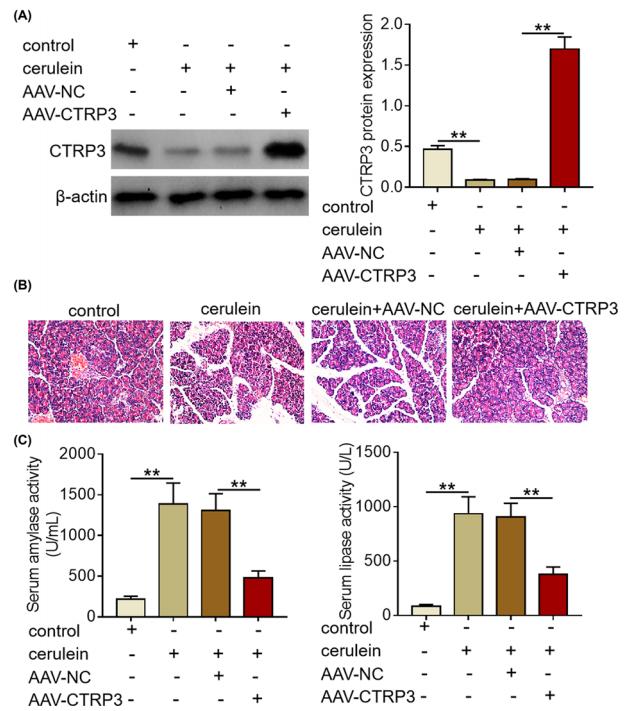Cerulein-Induced Pancreatitis Model
If you are looking for reliable rodent pancreatitis models to evaluate the efficacy of your test compounds, Creative Bioarray has got you covered. Our model is designed to induce pancreatitis using cerulein. With our extensive experience and expertise in this area, you can trust that our pancreatitis models will provide you with the reliable data you need to advance your research.
Cerulein-induced pancreatitis stands as one of the most comprehensively characterized animal models for pancreatitis research. Its reproducibility and cost-effectiveness make it a popular choice for inducing pancreatitis in rodents, particularly rats and mice. This model offers several advantages, including its noninvasive nature, sparing of bile duct and endocrine cell injury, facilitation of easily controllable injury grades, high reproducibility, and adaptability across multiple species, including mice, rats, hamsters, and dogs.
Cerulein, a cholecystokinin (CCK) analog derived from the Australian tree frog Litoria caerulea, effectively stimulates pancreatic digestive enzyme secretion in both humans and rodents. This peptide acts on two distinct CCK receptor subtypes: CCK1 (previously known as CCK-A) and CCK2 (previously known as CCK-B). Pancreatic acinar cells of various species express either CCK1, CCK2, or a combination of these receptor subtypes, allowing for a tailored response to cerulein administration. The utilization of this model provides researchers with a powerful tool to investigate the pathophysiological mechanisms underlying pancreatitis and evaluate potential therapeutic strategies.
Our Cerulein-Induced Pancreatitis Model
- Animal Available
Mouse - Modeling Method
- Cerulein-Induced Pancreatitis Model: Mice are given seven hourly intraperitoneal injections of cerulein for 6 weeks.
- Cerulein and LPS-Induced Pancreatitis Model: Mice are given seven hourly intraperitoneal injections of cerulein, followed by an immediate intraperitoneal injection of LPS after the last cerulein administration.
- Group Setting (Adjustable upon your request)
- Control group
- Model group
- Three dose groups of test compounds
- Endpoints
- Images of pancreas
- Histology analysis: H&E staining
- Cytokine analysis: TNF-α, IL-1β, IL-6, etc.
- Serum analysis: Amylase, Lipase, etc.
- qPCR and Western Blot
- Other customized endpoints: available upon request
Example Data
 Fig. 1 CTRP3 overexpression alleviates pancreatic injury in cerulein-induced SAP mice. (A) CTRP3 protein expression was examined by Western blotting analysis in the pancreas of mice from different treatment groups after tail intravenous injection of AAV-NC or AAV-CTRP3. (B) Representative images of H&E staining of pancreatic tissues of mice from different treatment groups (magnification, 100×). (C) Serum amylase and lipase activities of mice from different treatment groups were determined by amylase assay kit and lipase assay kit, respectively.
Fig. 1 CTRP3 overexpression alleviates pancreatic injury in cerulein-induced SAP mice. (A) CTRP3 protein expression was examined by Western blotting analysis in the pancreas of mice from different treatment groups after tail intravenous injection of AAV-NC or AAV-CTRP3. (B) Representative images of H&E staining of pancreatic tissues of mice from different treatment groups (magnification, 100×). (C) Serum amylase and lipase activities of mice from different treatment groups were determined by amylase assay kit and lipase assay kit, respectively.
Additionally, we also offer other pancreatitis models that maybe you are interested in:
- Sodium Taurocholate-Induced Pancreatitis Model
- Dibutyltin Dichloride (DBTC) Induced Pancreatitis Model
Quotation and Ordering
Creative Bioarray is known as a leading non-clinical CRO for preclinical drug development. We are dedicated to choosing the most validated and reliable models for evaluating the efficacy of your test compounds. If you are interested in our services, please do not hesitate to contact us at any time or submit an inquiry to us directly.
Reference
- Lv, C., et al. CTRP3 ameliorates cerulein-induced severe acute pancreatitis in mice via SIRT1/NF-κB/p53 axis. Bioscience Reports, 2020, 40(10): BSR20200092.